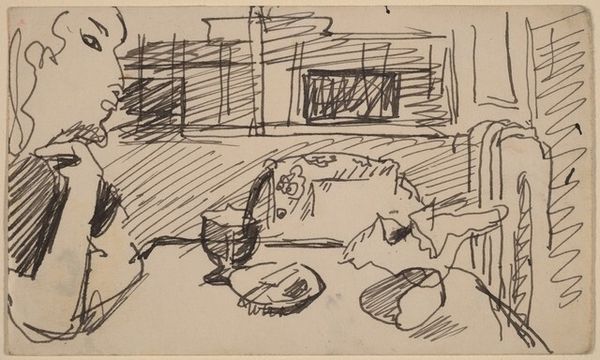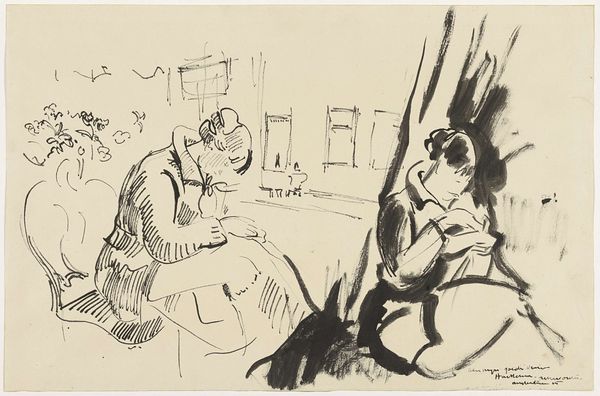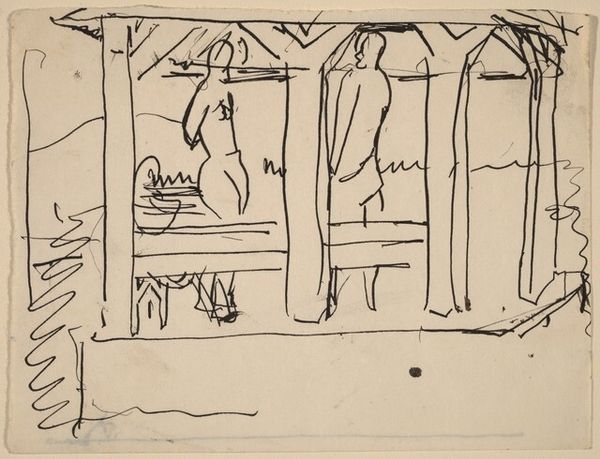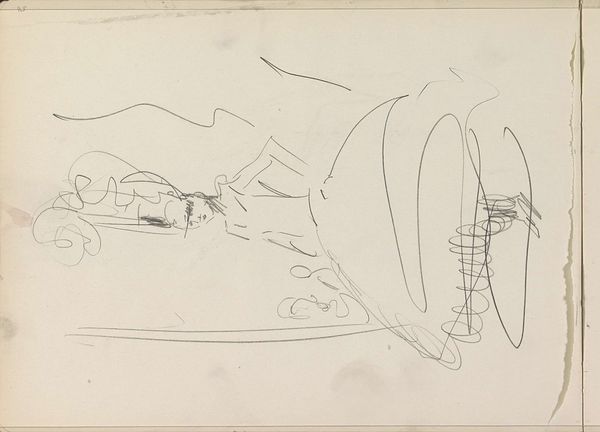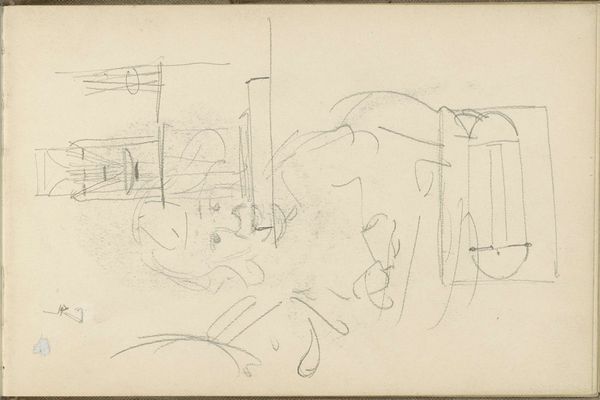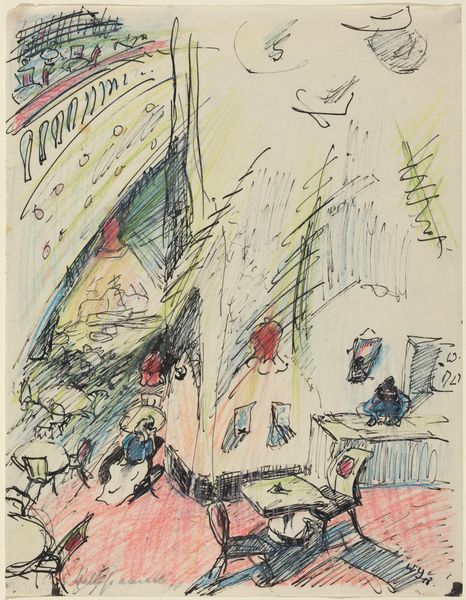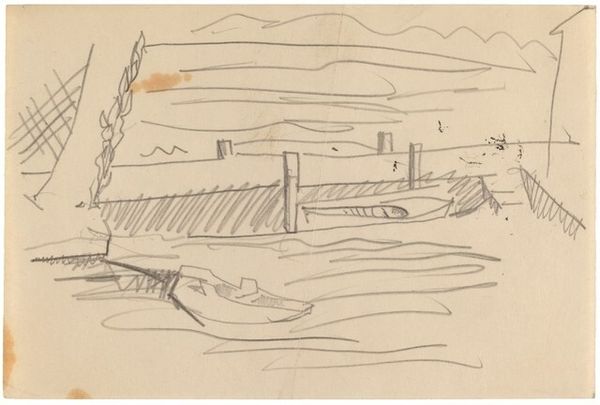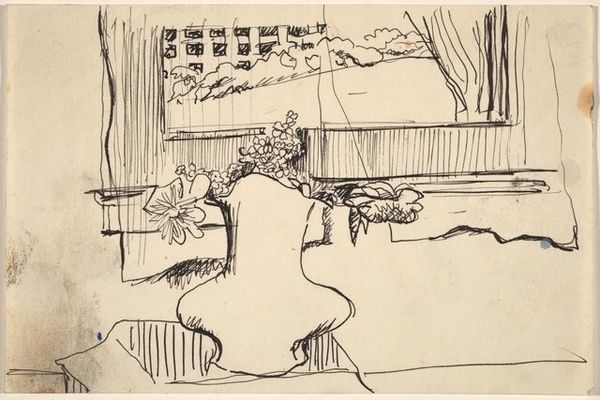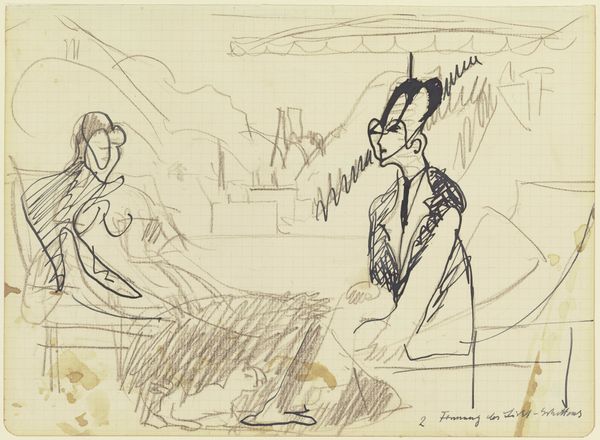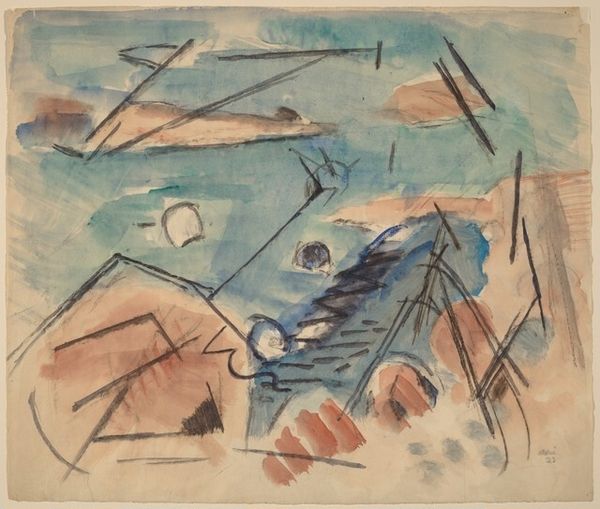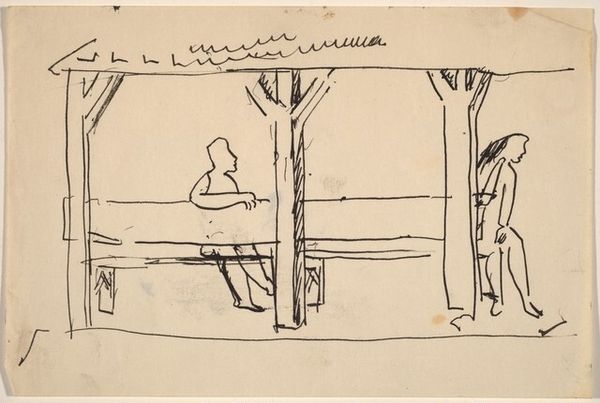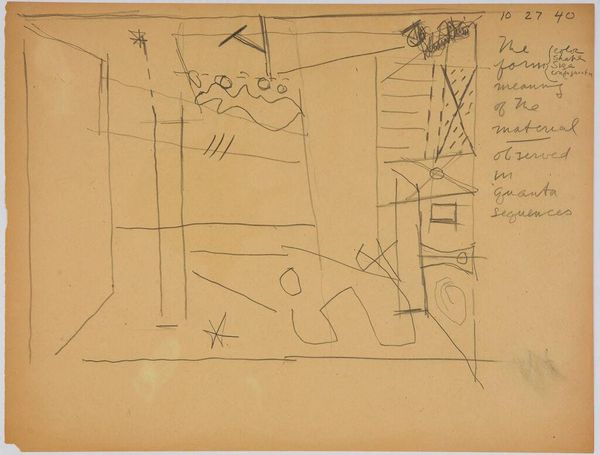![Fishermen, Provincetown [recto] by Karl Knaths](/_next/image?url=https%3A%2F%2Fd2w8kbdekdi1gv.cloudfront.net%2FeyJidWNrZXQiOiAiYXJ0ZXJhLWltYWdlcy1idWNrZXQiLCAia2V5IjogImFydHdvcmtzLzE3YWMwZTRhLWUyNGItNDg2YS04Yzc5LTU3Y2Y3YTRjM2E1NC8xN2FjMGU0YS1lMjRiLTQ4NmEtOGM3OS01N2NmN2E0YzNhNTRfZnVsbC5qcGciLCAiZWRpdHMiOiB7InJlc2l6ZSI6IHsid2lkdGgiOiAxOTIwLCAiaGVpZ2h0IjogMTkyMCwgImZpdCI6ICJpbnNpZGUifX19&w=1920&q=75)
drawing, watercolor
#
drawing
#
impressionism
#
landscape
#
figuration
#
watercolor
#
genre-painting
Dimensions: overall (approximate): 16.8 x 21.3 cm (6 5/8 x 8 3/8 in.)
Copyright: National Gallery of Art: CC0 1.0
Editor: So, here we have Karl Knaths' watercolor drawing, "Fishermen, Provincetown." It's a simple scene, but there's something quite engaging about the geometry and the muted color palette. What do you see in this piece? Curator: I see a powerful statement on labor and leisure, inextricably linked to place. Provincetown was a vital fishing community but also a haven for artists escaping urban centers. Knaths captures this tension. Notice the abstracted figures; they are generalized, archetypal. He avoids idealizing the fishermen, presenting them instead as figures embedded within a specific socio-economic structure. Editor: I hadn't considered the social context so directly. The impressionistic style felt more focused on the light and atmosphere. Curator: Precisely, and we shouldn’t ignore the gendered aspect of labor either. Historically, fishing has been a male-dominated industry, and art was a similar struggle for women artists to participate and gain recognition. Consider how these limitations intersect to reveal systemic inequality. Editor: That’s fascinating. It also gives weight to his particular approach. By simplifying the human figures, does he encourage us to consider the larger, systemic forces at play? Curator: Yes, exactly. And notice the way the artist renders the architectural forms surrounding the harbor—both the natural and built environments are essential factors in forming class distinctions in Provincetown at this time. How do you read that relationship, in terms of power? Editor: Well, I see that without even using color to signal difference, Knaths presents us with laborers in a system of natural resources, art, commerce and class all intersecting and building a sense of tension for the viewer. Curator: I’m glad you made that final note of tension, because this visual compression that speaks to class tensions could very well speak to other, similar social and political environments to this day. Thank you! Editor: Thank you. This perspective really shifts my understanding of what I initially saw as just an exercise in style.
Comments
No comments
Be the first to comment and join the conversation on the ultimate creative platform.
